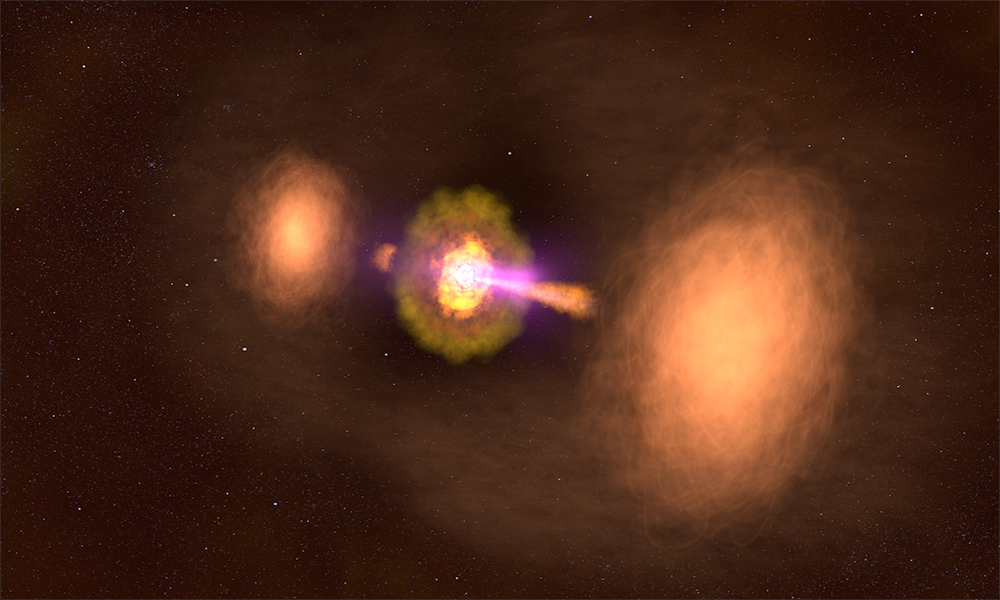If you’re a fan of “Star Wars,” Denison Professor of Physics and Astronomy Dan Homan can talk to you about a real-life galaxy that has a “TIE” to the blockbuster movie series. Homan is part of a NASA team that mapped TXS 0128+554 (TXS 0128 for short), a galaxy shaped like the TIE-fighter infamously piloted by Darth Vader.
The discovery involved a bit of a serendipity — and a lot of science. “The real-world universe is three-dimensional, but when we look out into space, we usually only see two dimensions,” says Homan, co-author of recent scientific research about the galaxy.
“In this case, we’re lucky because the galaxy is angled in such a way, from our perspective, that the light from the farther lobe travels dozens more light-years to reach us than the light from the nearer one. This means we’re seeing the farther lobe at an earlier point in its evolution.”
Around five years ago, NASA’s Fermi Gamma-ray Space Telescope reported that TXS 0128 is a faint source of gamma rays, the highest-energy form of light. Scientists have since taken a closer look using the Very Long Baseline Array (VLBA) and NASA’s Chandra X-ray Observatory.
“After the Fermi announcement, we zoomed in a million times closer on the galaxy using the VLBA’s radio antennas and charted its shape over time,” said Matthew Lister, a professor of physics and astronomy at Purdue University. “The first time I saw the results, I immediately thought it looked like Darth Vader’s TIE fighter spacecraft from ‘Star Wars: Episode IV – A New Hope.’ That was a fun surprise, but its appearance at different radio frequencies also helped us learn more about how active galaxies can change dramatically on decade time scales.”
A paper describing the findings was published in the Aug. 25 issue of The Astrophysical Journal and is now available online.
TXS 0128 lies 500 million light-years away in the constellation Cassiopeia, anchored by a supermassive black hole around 1 billion times the Sun’s mass. It’s classified as an active galaxy, which means all its stars together can’t account for the amount of light it emits.
An active galaxy’s extra energy includes excess radio, X-ray, and gamma-ray light. Scientists think this emission arises from regions near its central black hole, where a swirling disk of gas and dust accumulates and heats up because of gravitational and frictional forces.
Around one-tenth of active galaxies produce a pair of jets, beams of high-energy particles traveling at nearly the speed of light in opposite directions. Astrophysicists think these jets produce gamma rays. In some cases, collisions with tenuous intergalactic gas eventually slow and halt the outward motion of jet particles, and the material starts to flow back toward the galaxy’s center. This results in broad regions, or lobes, filled with fast-moving particles spiraling around magnetic fields. The particle interactions create bright radio emission.
Homan says, “We formed a working group, the MOJAVE team, nearly twenty years ago to study these amazing galaxies and how they change over time. Most of these jet outflows in active galaxies are millions of years old or older, but In this case, we found one that shows evidence of having started, stopped, and restarted again, all in the last century, giving us a unique picture of their evolution at an early stage.”







